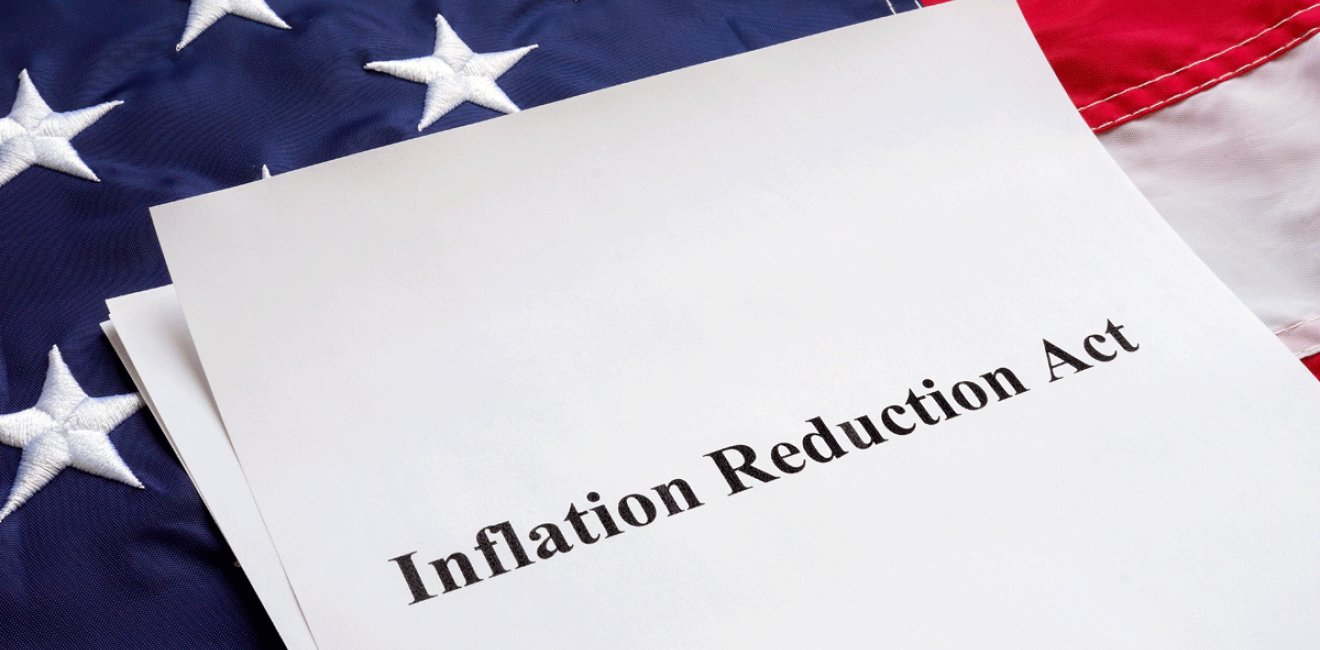The IRA and Competitiveness
Kent Hughes
Wilson Center Public Policy Fellow
The IRA takes several steps to make America competitive in the world of green energy. By relying on incentives rather than regulations, companies will be able to use the best available technology rather than being locked into today’s innovations. The IRA also incentivizes use of the prevailing wage (usually the union wage), which will help US manufacturing attract more young people to master today’s high-tech skills. It keeps its eye on the widely shared goal of increasing manufacturing in North America, leveling the international playing field by using American incentives to match the competition from overseas. The European Union already complains that the US incentives may violate the rules of the World Trade Organization, but that will require international negotiations over a new global standard. The IRA also promises $300 billion in deficit reduction—taking some pressure off the Federal Reserve could slow the rise in interest rates, a plus for investments.
These incentives will make America more competitive in a series of clean energy industries, but questions remain. The new 15% minimum corporate tax allows deducting only 75% of the R&D tax credit. The IRA also allows negotiations to limit drug prices. Reducing medical costs is important for many Americans. At the same time, it will be important for America to continue its medical research and incentives for development.
While the IRA is a complicated bill, it moves the United States in the right direction on innovation and competitiveness.
The IRA and Climate
Lauren Herzer Risi
Director, Environmental Change and Security Program
In the drive for climate action, the Inflation Reduction Act (IRA) represents a foot coming off of the brake and stepping ever so lightly on the gas pedal (of an electric vehicle, of course). The legislation has the potential to be historic in its achievement, but its success is dependent on a number of complex factors that will require sustained attention and investment from the federal government, state and local governments, private industry, and civil society.
Here’s some of what the bill does: it provides tax incentives for investments in clean energy, electric vehicles, and nuclear power production; it puts the US on a path to reduce 2005 emission levels nearly 40% by 2030; it bolsters workforce development and permitting processes through the provision of additional funds to the Department of Energy, the Federal Energy Regulatory Commission, and the Interior Department; it places the US on par with global climate spenders like the EU; and it gives a nod to supply chain challenges by incentivizing domestic manufacturing.
Here’s some of what it doesn’t do: halve US emissions by 2030 (the amount pledged by the US in the Paris Agreement); provide the raw minerals and other materials needed for clean energy technologies (see the Bipartisan Infrastructure Law for more on critical minerals); and overcome the challenges of siting and connecting new clean energy sources to the grid.
As with most legislation, the devil is in the details—the IRA allows for oil and gas drilling expansion, for example. But given the political and economic realities of the moment, the IRA shows that compromise is still possible, that progress can be made, and perhaps most importantly, it lays the groundwork for a clean energy transition in the world’s second largest carbon emitting country.
A Mixed Bag
Jerry Haar
Wilson Center Global Fellow, Professor and Executive Director for the Americas, Florida International University
The Inflation Reduction Act (IRA) is more akin to a Rorschach inkblot since one sees in it what one wants to and interprets it accordingly. Advancing the public good vis-à-vis climate, healthcare (prescription drugs), and taxes are certainly commendable. However, one must evaluate the law’s probable impact with a critical eye. To begin with, carbon emission reductions are much less than committed to under the Paris Agreement. The health care premium reductions for low- and middle-income Americans are not permanent, and the 15% minimum tax on corporate income is meaningless since there are a myriad of provisions in the IRS tax code that will allow companies to pay less than 15%. On the other hand, companies will be harmed tax-wise since the law does not provide for adjustments for cost recovery, including accelerated depreciation and depletion, nor for deductions related to employee stock ownership. A number of American industries will lose out under the new law, including home building, one of the nation’s most important. In the current inflationary environment, high materials prices for nonresidential construction projects have increased by 20% during the past 12 months, and 46% since February 2020. This exposes contractors to additional supply chain and employment issues as they continue to recover from the COVID-19 pandemic. Beyond specific industries, however, American taxpayers will be negatively impacted by the new law. According to the Joint Committee on Taxation, taxes in 2023 will increase by $16.7 billion on taxpayers earning less than $200,000.
The Inflation Reduction Act is neither an apocalypse nor a panacea. Given the deep divisions not only on Capitol Hill, but also in the country at large, the fairest grade one could give the recently passed IRA is C+
A Lost Opportunity to Boost US Competitiveness
Shihoko Goto, Director for Geoeconomic and Indo-Pacific Enterprise and Deputy Director, Asia Program
The US inflation rate reaching nearly double digits has alarmed not only Americans, but also the world at large. The fact that the Biden administration has been politically invested to tackle surging inflation and stabilize the domestic economy has been encouraging even for those outside of the United States, including Asia. After all, a strong United States is still regarded as the first line of defense against Chinese aggressions, and a robust US economy is imperative to ensure continued US commitment as a Pacific power. There are, however, questions about whether the Inflation Reduction Act (IRA) will ultimately lead to greater US competitiveness and further global presence.
One of the IRA’s main goals is to tackle the immediate challenge of rising energy costs and to incentivize a transition to clean energy. At the same time, the United States has emerged in recent years as an energy exporter at a time when the world has become increasingly vulnerable to depending on energy sources from areas of high geopolitical risk. The IRA’s solution is to provide tax incentives for consumers to transition to electric vehicles and sustainable energy sources on the one hand, and promote carbon-capturing technology at coal- and gas-burning plants on the other. What is lacking is a more far-sighted vision of the United States committed to investing in the vast infrastructure necessary to ensure the proliferation of new energy sources, and ensuring that near-term energy needs are met within and beyond the United States through existing networks.
A strong US economy remains in the interest not only of Americans, but also of the world economy that is facing increased risks. The IRA has succeeded in identifying some of the biggest challenges facing US growth prospects, but the focus on providing tax credits as the solution to structural shifts in energy markets could prove short-sighted.
The IRA could have been an opportunity for Washington to encourage more innovation, rethink its broader energy security strategy, and bolster US competitiveness for the long term, but it has instead focused on lowering prices at the pumps as quickly as possible and meeting other immediate needs.
Geopolitics, Competition, and the Inflation Reduction Act
Mark R. Kennedy
Wilson Center Fellow, Member of Congress (MN 2001-07), President Emeritus of the University of Colorado
None of us has lived during a time when the largest economy, the most advanced technology, and dominant military did not reside in a democracy. The rising potential of an authoritarian rival claiming each of these distinctions requires America, in concert with its allies, to engage in strategic competition. The importance of competition to national and global prosperity and security demands that it should be a primary lens to judge all policy actions. Let us consider the recently passed Inflation Reduction Act (IRA) from the perspective of strategic competition.
The positives.
Enhancing Energy Infrastructure and Capacity. Energy producing capacity is a key component of geopolitical power. Significant portions of expenditures under the IRA are to spur infrastructure investment, some to make structures more energy efficient, some to spur additional production and transmission capacity. The bill supports a wide range of renewable sources including nuclear power. It makes the government’s permitting of right-of-way for wind or solar development contingent on offering significant opportunities for additional oil and gas production on federal lands and federal waters. The follow-on bill to streamline permitting, if passed, would further accelerate capacity expansion. Though effectiveness of subsidies is uncertain, support across the energy spectrum could bolster America as an energy powerhouse.
Democracy. Democracy is in retreat globally in part due to its perceived inability to act on the concerns of its citizens. While bipartisan efforts are preferred, achieving action on a matter important to citizens—in the US and around the globe—improves the standing of democracy.
Leading on Climate Change. The innovation of private industry discovering sustainable solutions and of consumers pursuing more sustainable products are unsung heroes in the pursuit of carbon reduction. The Rhodium Group projects that without this bill, the United States is already on a path to reduce carbon emissions by 24-35% by 2030. They estimate that the IRA will accelerate carbon reduction to 31-44%. With many countries prioritizing climate action more than the United States, this highly public progress toward achieving the nation’s Paris Agreement to cut emissions by half by the end of the decade will increase confidence in American leadership, and bolster its vital ability to attract other nations to common cause.
Fiscal Impact. Whether the forecasted ten-year deficit reduction occurs—variously forecasted to be $250-$300 billion—depends on many variables, including whether the assumed suspension of Affordable Care Act subsidies in 2025 actually occurs. With skyrocketing federal government debt limiting future flexibility for action during a crisis, this unusual display of fiscal constraint is welcomed. It also helps preserve the primacy of the US dollar as the world’s preferred global currency.
Rare Earths. The IRA provides funding and expands the Presidents’ authorities to carry out activities under the Defense Production Act of 1950 to pursue critical material sources, including rare earths vital to renewable energy—now largely controlled by China.
The negatives.
Economic Impact. The Tax Foundation forecasts that the IRA will reduce long-run GDP by -0.2%, wages by -0.1%, and jobs by 29,000 as the corporate tax increase is expected to impact the middle class. Moody’s Analytics similarly forecasts a modest negative economic impact between 2023-2025, with modest GDP benefits thereafter. Few things are more important in strategic competition than economic growth.
Higher Energy Costs. Experiences in Germany and California show that pursuing a greater share of energy from renewable resources, increases energy costs, making producers less competitive globally.
Tax Complexity. The corporate minimum tax on reported book income vs. taxable income reflects a double jeopardy that mitigates the impact of incentives in the tax code to invest and pursue other priorities incented in the code.
Suppressing Innovation. A key American advantage over its authoritarian rivals is the innovativeness and efficiency of its market-based economy. Price-controls—forcing companies to negotiate prices with Medicare—suppresses innovation and distorts markets. A George Washington University Regulatory Studies Center analysis shows that the Biden administration has imposed a record number of economically significant new regulations.
Undermining Rules-Based Order. A key element of a rules-based order is embracing a level playing field instead of nations tilting the table in their favor. The IRA reflects a further retreat from global fairness. The European Union asserts that the bill gives advantage to American producers, discriminates against European producers, and breaks World Trade Organization rules.
What is missing.
Given the energy crisis Europe faces, and Japan’s need for energy, the IRA could have focused more on how America could help supply their energy needs.
North America and the IRA
Andrew Rudman
Director, Mexico Institute
Passage of the Inflation Reduction Act (IRA) represents the most significant demonstration of the United States Congress’ commitment to North America since the approval of the United States–Mexico–Canada Agreement (USMCA) and the ratification of the original North American Free Trade Agreement (NAFTA) three decades ago. Tucked mid-way through the section covering clean vehicle tax credits is a requirement that “the final assembly of [the vehicle] occurs in North America.” This phrase marks an important change from the Biden Administration’s late 2021 Build Back Better proposal, which limited these credits to vehicles produced in the United States. Further, the critical minerals and battery component requirements call for extraction or processing of critical minerals “in any country with which the United States has a free trade agreement in effect” or is “recycled in North America” to qualify for the tax credit.
These seemingly modest changes acknowledge the extensive integration of the North American auto industry. Policies that reward rather than penalize further integration will contribute to a successful energy transition, including the lifecycle of batteries and critical minerals. Mexican officials had argued that the original Build Back Better language would have undermined incentives to integrate and put at risk as many as 6 million jobs. Following passage, the Mexican government celebrated the outcome, noting that it would facilitate more rapid adoption of these technologies. The changes, conveniently, come just as the three countries begin USMCA consultations regarding Mexico’s compliance with the energy provisions of the agreement. Ideally, the inclusion of the phrase “North America” will not be limited to a single piece of legislation or sector, but will be reflected in subsequent industrial policy proposals.











